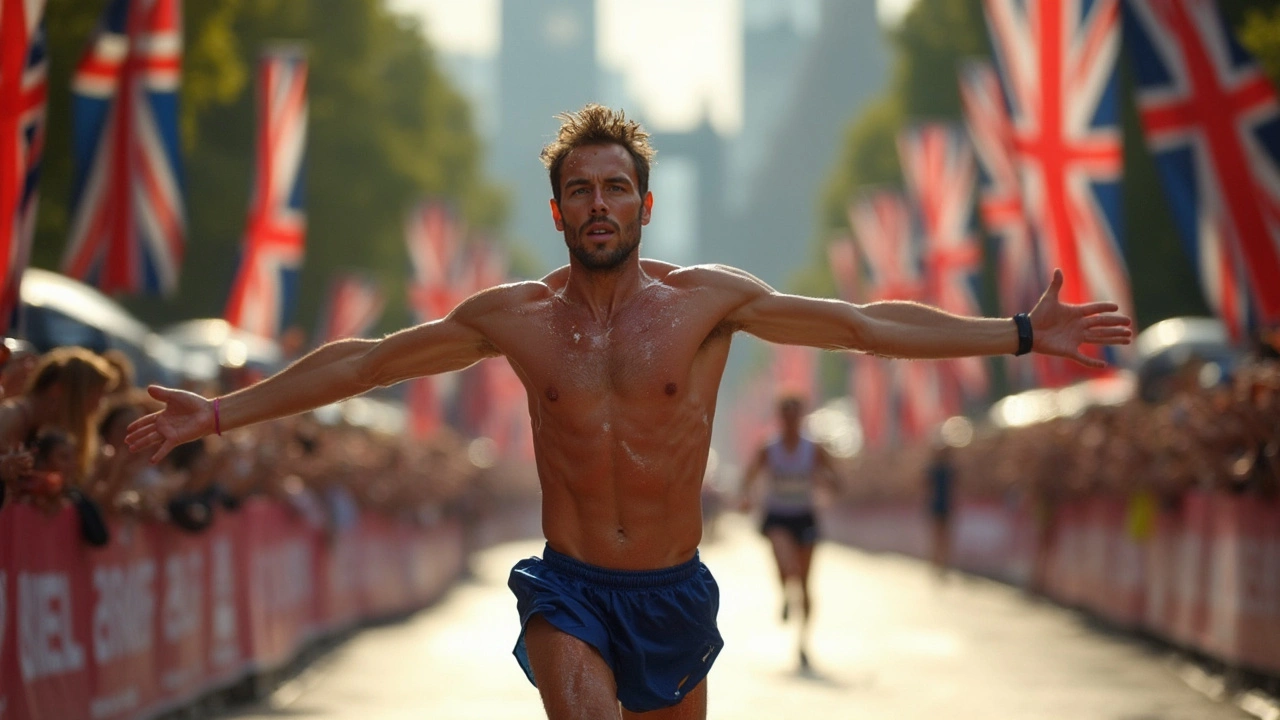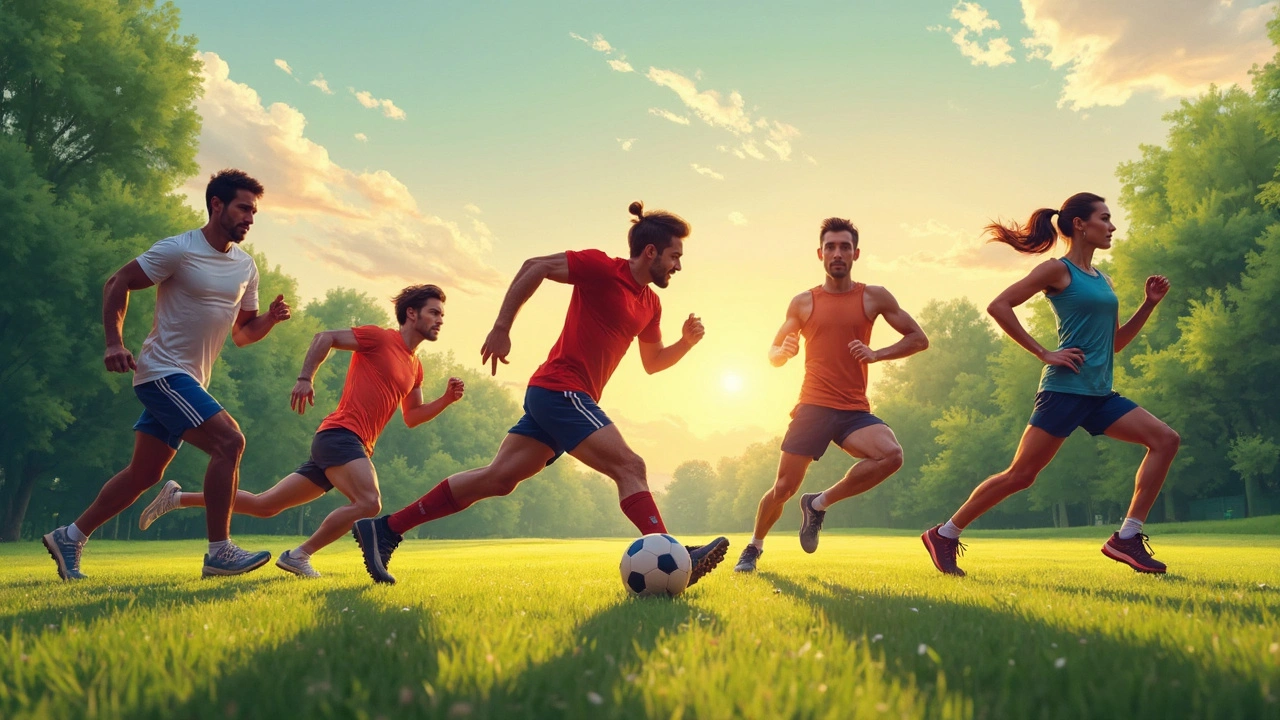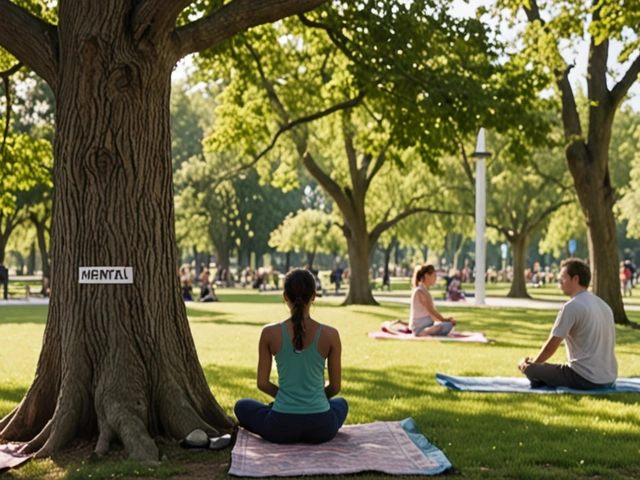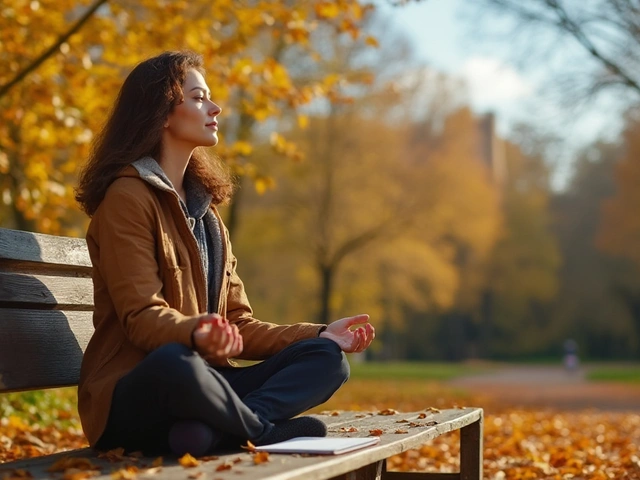Ever wondered why top athletes always seem a step ahead, not just in the game but in their recovery, too? The secret isn't just in their training or diet—it's a stealthy tool called sports massage. A practice once reserved for the Olympians is now making waves among fitness enthusiasts of all levels. This isn't just any massage; it's one designed to loosen those stiff muscles, ease the painful cramps, and keep athletes on top of their game.
So, why should you, someone who might not be off to the Tokyo Olympics, care about sports massage? Well, if you've ever woken up sore after a gym session or pulled a muscle trying out that new yoga pose, you already know recovery is essential. Sports massage can be your best friend here, reducing muscle tension effectively and promoting flexibility. It's like having a personal pit crew ready to tune you up before and after workouts.
Imagine this: You step into your next workout session feeling like a well-oiled machine, less prone to injuries and more agile. Sounds dreamy, right? That's what regular sports massage offers. It doesn't just aid physical recovery but improves your mental game, too! Athletes often note they feel more positive and motivated post-massage, ready to tackle their next challenge.
- Why Athletes Swear By It
- Boosts Performance and Flexibility
- Quickens Recovery Time
- Combatting Injuries Before They Start
- Tailoring Massages for Different Sports
- How to Get Started with Sports Massage
Why Athletes Swear By It
Curious why top athletes like LeBron James and Serena Williams have sports massage on speed dial? It's not just a luxury—it's a necessity. For athletes, keeping in top form isn't just about clocking hours in training, it's about smart recovery. Aiding in athletic recovery is where sports massage comes in.
Boosting Performance
Sports massage isn't only about soothing muscles; it's a strategic tool for performance enhancement. By reducing muscle tension, athletes find they can push harder during training without the usual fatigue. Think about it, less downtime with aches means more time getting stronger.
Injury Prevention
It's all about staying one step ahead. Regular massage helps identify potential problem areas before they become serious injuries. You'll often hear athletes say that this proactive approach allows them to tweak training to avoid setbacks.
The Relaxation Factor
A less talked about benefit is the mental edge athletes gain. After a session, there's a noticeable decrease in anxiety and an uptick in focus and stress relief. Sports massage is like hitting the refresh button, boosting both the mind and the body. For many professionals, this psychological edge is just as important as the physical benefits.
Real Results Backed by Data
| Benefit | Impact Percentage |
|---|---|
| Reduced Muscle Soreness | 30% improvement |
| Increased Range of Motion | 20% better flexibility |
| Less Post-Exercise Fatigue | 45% quicker recovery |
Now, if LeBron is using it, maybe it's time to consider how sports massage can power up your own fitness routine!
Boosts Performance and Flexibility
When it comes to lifting your athletic game, few things are as crucial as maintaining peak performance and flexibility. Let's be real—tight muscles are like unwelcome guests, showing up unannounced and overstaying their welcome. A strategic session of sports massage can send them packing.
But how exactly does it work? Well, it's all about blood flow. Massages improve circulation, meaning your muscles get a fresh supply of oxygen and nutrients while flushing out toxins. This oxygen boost isn’t just feel-good fluff; it translates directly into better muscle performance and faster recovery.
Increase Your Range of Motion
Another win is enhanced flexibility. When your muscles are limber, you can stretch further, run faster, and even breathe deeper. For athletes, increased range of motion can be the difference between a personal best and a forgettable performance. Stronger swings, higher jumps, you get the idea.
Prevent Muscle Inhibition
Often, we find our muscles refusing to give their all, a phenomenon known as muscle inhibition. This usually happens when we're dealing with muscle knots or tightness. A thorough sports massage can ease these knots, 'unlocking' your muscles so they can move more freely and deliver the results you crave.
If you need numbers to back this up, studies show regular sports massages can improve an athlete's flexibility by around 20%. Imagine that kind of improvement, especially in sports where every degree of motion counts!
If you're hesitant about incorporating massage into your routine, start slow. Perhaps a session every couple of weeks, increasing as your body acclimates to the added benefits. Many athletes find it an indispensable part of their weekly regimen. Athletic recovery isn't just about resting; sometimes it's about active rest, and that's precisely what massage offers.
Quickens Recovery Time
Ever twisted an ankle or been wiped out after a relentless session at the gym? That's where sports massage comes into the picture, like a recovery superhero. We can't deny it—everyone wants to bounce back faster and hit the ground running. Studies have shown that athletes who regularly incorporate massage into their routines can reduce recovery time significantly, sometimes by up to 50%.
One of the magical elements of sports massage is how it tackles inflammation. After any intense exercise, inflammation is your body's way of responding to stress and repair. While some level of inflammation is natural, too much of it can slow you down. Sports massage promotes better blood flow, which helps flush out metabolic waste built up during a workout. This spurs quicker healing and leaves you less sore and more ready for action.
Another cool benefit of sports massage is it helps the nervous system chill out. We often overlook how recovery is as much about the mind as it is the body. Techniques used in sports massage stimulate relaxation, helping reduce cortisol—our stress hormone—levels. This means not only do you recover faster physically, but you also get a mental breather, making you less likely to feel burnt out.
Wondering how this translates to actual performance? Check this out:
| Recovery Component | Impact of Sports Massage |
|---|---|
| Muscle Soreness | Reduction by up to 30% |
| Inflammation | Decreased by enhancing lymph flow |
| Overall Recovery Time | Up to 50% faster return to activity |
Whether you're a weekend warrior or a seasoned pro, sports massage can be the secret hack you need in your recovery toolkit. With faster recovery, not only do you perform better, but you're less likely to sustain injuries down the track. So, next time you're feeling the post-workout aches, you might want to consider booking that massage session!

Combatting Injuries Before They Start
Nobody wants to be sidelined by injuries, especially when you're working hard to stay active. This is where sports massage can really make a difference. The key idea here is about preventing injuries by keeping your muscles healthy and ready for action. Think of it as giving your body the regular maintenance it needs to perform at its best.
How does it work? Well, sports massage helps identify and treat soft tissue discomfort. The therapist focuses on areas prone to overuse and strain, such as hamstrings for runners or shoulders for swimmers. By loosening tight muscle fibers, this massage technique reduces the risk of developing painful injuries.
Spot the Trouble Before it Begins
A skilled sports massage therapist isn't just working out knots. They're also evaluating your muscle health, spotting potential red flags like tightness and imbalances that could lead to injuries. It's an extra set of eyes looking out for your well-being, helping you tweak your routine before a small issue turns into a big problem.
Is there hard evidence backing this up? You bet! A study from the Journal of Sports Medicine highlights how regular sports massages reduced injury rates among athletes by up to 30%. That's a substantial edge, especially during high-performance periods.
Helpful Tips for Injury Prevention
- Schedule regular massages – even once a month can make a huge difference.
- Focus on problem areas specific to your sport or workout routines.
- Communicate openly with your therapist about any discomfort to zero in on trouble zones.
- Combine massages with stretching exercises to maintain flexibility.
In a nutshell, think of sports massage as an insurance policy for your body. Investing time now means less downtime later, keeping you in the game longer without unnecessary setbacks.
Tailoring Massages for Different Sports
Every sport has its own unique set of physical demands and challenges, which means the way you approach a sports massage should fit your specific athletic needs. From high-impact games like football to endurance activities like marathon running, tailoring the massage to the sport can make all the difference.
Football and Rugby
For those involved in sports like football and rugby, where physical contact and tackles are just part of the game, the focus is usually on deep tissue massage. This technique targets the deeper layers of muscles and connective tissues, perfect for alleviating tension in areas like the shoulders, back, and legs, which take most of the impact.
Running
Runners, whether sprinters or marathon enthusiasts, often face issues with their legs, especially the calves, hamstrings, and quads. A massage here not only helps in reducing muscle stiffness but also in increasing flexibility. Techniques such as effleurage and petrissage can be effective in promoting blood flow and speeding up muscle recovery.
Swimming
Swimmers have a whole different set of needs. The repetitive arm movements can strain the shoulders and upper back. Here, incorporating techniques that focus on relieving tension in these areas can aid in better movement execution and reduce the risk of overuse injuries.
Golf
Golf might not seem as intense as other sports, but it puts a lot of strain on specific parts of the body. Lower back, shoulders, and arms are common trouble spots for golfers. A sports massage for golf enthusiasts might include gentle stretching and range of motion techniques to maintain flexibility and prevent stiffness, crucial for that perfect swing.
Tailoring your massage not only enhances performance but also maximizes the benefits you reap from them. It's like giving your body the precise tools it needs to excel in your chosen sport, keeping you on the field, in the water, or on the track longer and stronger.
How to Get Started with Sports Massage
Dipping your toes into the world of sports massage is easier than it might seem. Whether you're an athlete or just someone who enjoys staying active, adding this kind of massage to your routine can make a big difference. Here’s a simple guide to get you rolling.
1. Find a Qualified Therapist
The first step is to find a licensed massage therapist experienced in athletic recovery. Not every therapist specializes in sports massage, so ask about their expertise and if they've worked with athletes before. Recommendations from fellow fitness buffs can also point you in the right direction.
2. Set Your Goals
What are you hoping to achieve with sports massage? Do you want to improve performance, prevent injuries, or enhance flexibility? Be clear about your goals when you meet your therapist, so they can tailor the sessions to fit your needs.
3. Timing is Everything
Timing can affect the benefits you get from your massage. Schedule your massage either a day before or after intense workouts to help quickens recovery time and avoid feeling too sore if you're hitting the gym hard.
4. Communicate Openly
The more your therapist knows about your workout routine, areas of tension, and any pain points, the better they can help. Don’t be shy to speak up about what feels good and what doesn’t during the session.
5. Establish a Routine
One massage session is great, but regular treatments can lead to better results. Aim for a bi-weekly or monthly routine to keep those muscles in top shape, reducing the risk of injuries and keeping you flexible.
Bonus Tip
If you’re data-driven like many athletes, tracking how you feel after each session can be insightful. Keep a simple diary of your energy levels, pain, and performance improvements. This way, you can tweak the frequency and focus of your massages over time.
Getting started with sports massage is as much about finding the right fit for you as it is about consistency. Once you find a rhythm that works, you'll wonder how you ever managed without it!






